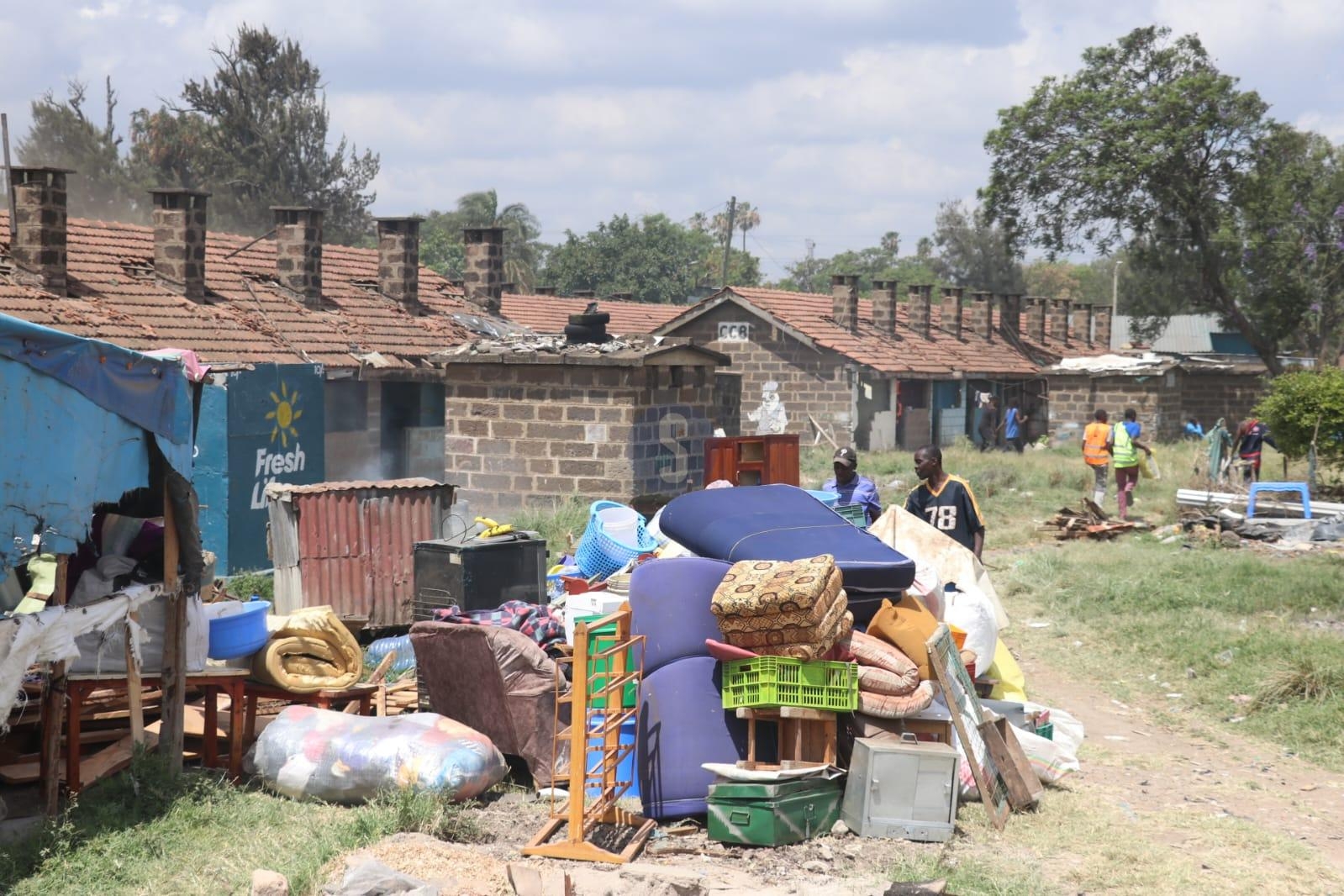An environmental and social impact assessment report for the controversial planned road traversing the fragile Aberdare National Park will be ready in a few weeks, the Star can reveal.
Sources reveal the project has received massive rejections from nature lovers who have repeatedly warned the project will have devastating impacts on the fragile ecosystem.
“The technical team has prepared a report. We will make decisions based on an ongoing review by the technical team. The report will be ready in a week or two,” a source told the Star.
The source sought anonymity for fear of reprisal from senior government officials pushing to have the project completed.
The road project, according to the environmental and social impact assessment study report is 97.8 km long in Nyeri and Nyandarua counties.
The main section starts at Ihithe, takes a south-westerly course through the Nyayo Tea Zone, and enters Aberdare National Park.
The road then emerges from the park at about 33 kilometres (Mutubio Gate). From this gate, the road descends through a series of hairpin bends to Kahuruko.
The stretch between Mutubio Gate and Kahuruko, which is about 10 km, is tarmacked.
From Kahuruko, the project road continues to descend and ends at its junction with the C69 Road at Ndunyu Njeru.
Other road sections included in the project are the Njengu-Treetops Gate-Amboni, the Ihithe-Kiamutiga- Mukarara, the Ark Gate Access, the Munyaka-Koinange-Heni-Mwendandu and the Njoma-Weru road sections, totalling about 46km.
KeNHA is proposing to upgrade the road from earth to an all-weather road for at least Sh8 billion.
The authority was, however, compelled to suspend the project in September 2022 due to a lack of approval from key government agencies.
The Kenya Forest Service, Kenya Wildlife Service and National Environment Management Authority are among the agencies that initially turned down KeNHA’s request.
They rejected it because proposed road traverses 25km of closed canopy forest.
It will also cross a crucial area containing iconic species such as elephants.
Conservation NGO Rhino Ark Charitable Trust, Africa Wildlife Foundation, East Africa Wildlife Society, and the Conservation Alliance of Kenya are among many conservation organisations that have outright rejected the project, citing “possible serious environmental impacts to the Aberdare ecosystem”.
A highly placed source at National Environment Management Authority (NEMA) initially told the Star that the previous rejection was likely to stand.
“Nothing has changed. The project is unlikely to be licensed. Most civil society organisations are coming out strongly to oppose it,” a highly placed source said at the time.
The source who requested anonymity, as the matter is highly contentious, said, “The NGOs are vehemently opposed to the project.”
The highly placed source accused a senior government official of pushing the project.
Ironically, the state aims to grow 15 billion trees in 10 years to attain 30 per cent tree cover by 2032, up from the current 12.13 per cent.
The bid will need as much as Sh600 billion, meaning the budget for each year will be Sh60 billion.
The forest cover increased from 5.9 percent in 2018 to 8.83 percent in 2021, while the national tree cover stands at 12.13 percent above the constitutional target of 10 percent.
Results generated by the National Forest Resources Assessment 2021 show the country has 12,914,201 acres ( 5,226,191.79ha) of national forest cover, which represents 8.83 percent of the total area.
The Aberdares, one of the five water towers in the country, will lose close to 300 acres of tree forest, moorland, and bamboo should the proposed construction of the 25-kilometre road cutting across the fragile ecosystem go ahead.
The calculated move is aimed at restoring 10.6 million hectares of degraded landscape for improved biodiversity and climate change mitigation and adaptation.
This is not the first time Nema has opposed the project.
On October 27, 2009, Nema said it had reviewed the environmental impact assessment report for the project after stakeholders raised issues.
Among the issues pointed out by Nema was the fact that the project had failed to provide alternative routes to mitigate the identified adverse impacts on the natural forest.
“The proposed project will have massive impacts on the natural forests during construction. It is possible that some endangered tree species may be affected,” Nema said in a letter dated October 27, 2009.
The letter referencing NEMA/EIA/5/2/421 from Nema was signed by M. M. Langwen and shared with the Roads PS.
The letter warned that the negative impact of the project would be felt far and wide.
It said the Aberdare Forest was one of five water towers providing water to Nairobi and also feeding Lake Naivasha, the backbone of horticulture.
“The proposed mitigation measures are inadequate in terms of addressing the anticipated negative impacts,” the letter said.
“…the authority is of the view that the proposed project will not enhance sustainable development and sound environmental management. You are advised to re-design your plans or explore an alternative site.”
Conservationists say the destruction of precious wildlife and natural habitat must be stopped, as there is no evidence of economic value to warrant such disturbance to a water tower.
Environmentalists have unpacked the reasons they vehemently oppose the state’s bid to upgrade a controversial road.
In a blow-by-blow breakdown, they say the negative impacts of the project on the fragile ecosystem outweigh the positives by far.
For instance, they said a very large number of indigenous trees will be felled by bulldozers to pave way for the proposed upgrade.
In fact, an Environmental and Social Impact Assessment report shows that around 104 hectares ( 256 acres) of vegetation potentially will be destroyed.
Out of this, the project will potentially destroy 185 acres ( 75ha) of bamboo; 34.5 acres ( 14ha) of forest; and 34.5 acres ( 14ha) of moorland potentially will be destroyed, environmentalists say.
Once the report is ready, it will be handed over to Environment CS Soipan Tuya to “make a political decision”.
In May last year, Tuya said her position is that it is necessary to explore the alternatives before anybody can okay the construction of the road.
“There is a petition from the Nyandarua county Assembly proposing the construction of a road across the Aberdares. The position of the ministry is that there has to be a demonstration of the absolute need to take a road across the Aberdare Forest,” she said.
Tuya made her remarks at Karura Forest during a tree-planting drive.
Her ministry had received thousands of requests since 2019 to exempt public and private agencies from the moratorium on logging to enable them engage in development activities such as road construction and sewerage plant establishments, among others.
Tuya revealed then that her office was consulting the Attorney General’s office on a legal pathway, after which the ministry would publish a public notice giving guidance.
She said at the minimum, the ministry shall require an upfront plan from all these agencies requesting exemption to show how they will replace them by planting and growing double the number of trees they propose to cut in the course of those development activities.
On April 20, Tuya was among the CSs who appeared before a joint committee of the Senate on land, environment, and natural resources, as well as roads and transport, to shed light on the stalled project.
Transport CS Kipchumba Murkomen and the then Tourism’s Peninah Malonza also attended the session.
During the meeting, it was agreed that the concerns raised about the project would be addressed.

















